The end of the world is often exaggerated, even in Port Townsend.
But the place known as "End of the World" to generations of local kids, a U.S. Army World War II era concrete observation post, is …
This item is available in full to subscribers.
We have recently launched a new and improved website. To continue reading, you will need to either log into your subscriber account, or purchase a new subscription.
If you had an active account on our previous website, then you have an account here. Simply reset your password to regain access to your account.
If you did not have an account on our previous website, but are a current print subscriber, click here to set up your website account.
Otherwise, click here to view your options for subscribing.
* Having trouble? Call our circulation department at 360-385-2900, or email our support.
Please log in to continue |
|
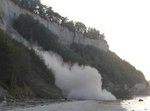
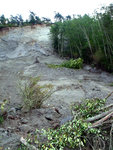
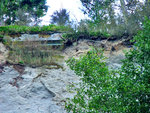

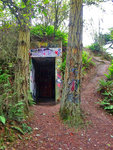
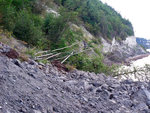
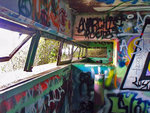
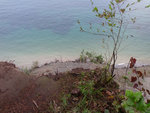
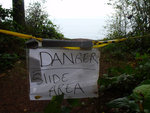
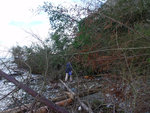
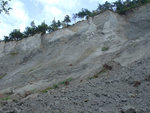
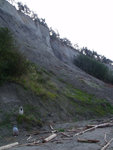
The end of the world is often exaggerated, even in Port Townsend.
But the place known as "End of the World" to generations of local kids, a U.S. Army World War II era concrete observation post, is still with us.
For now. But the bluff nearby is falling away, a few chunks at a time.
The sandy bluff below the war relic has substantially collapsed in the last few months, with an especially large chunk including several trees falling last month to the beach some 275 feet below. Since, there have been continuing small slides and large chunks falling away, prompting City of Port Townsend officials to close the bluff-top site with signage and danger tape.
On Sunday, Oct. 13 at about 6 p.m., the collapse of another part of the bluff was captured on video by a Leader reporter who happened to be walking the beach. Port Townsend resident Kellie Henwood was on the beach at the time and had just crossed the section where the landslide, seconds later, fell. Her friend Charles Steurer was on the other side of the landslide. Neither was hurt, and both said it was the most amazing thing they had ever seen.
POPULAR SPOT
“End of the World” is the popular term for the one-acre city park officially known as Elmira Street Park, for its location at the end of Elmira Street. Young people for many decades have tread the short trail to the old observation post to watch sunsets and party, thrilling at the seaside high bluff that marked the so-called End of the World. Other residents have used it as a launching point for various forms of debris, including sofas, bicycles and much, much more.
Some of that material is now cascading to the beach along with the sand and dirt.
On the beach, the slide has become a roadblock for people who walk the beach west from North Beach, or east from Cape George, although the walk is fully accessible at low tide.
Rick Sepler, Port Townsend’s development services director who oversees city parks, said the park is undeveloped and was obtained by the city through a swap with neighboring landowners in 1994.
As soon as the city was notified of the landslide, Sepler said, city crews put up signage and fencing to keep people away from the edge.
“We’re aware of it, have taped it, signed it and have temporarily closed it,” Sepler said. “We’ll look at it closer and if it’s a risk to the public, we’ll literally have to fence it off.”
Sepler said the erosion is inevitable and would be almost impossible to control.
“It is typical of many marine bluffs,” he said. “They tend to fracture, have big sloughs, then erode 4 to 6 inches per year, depending on exposure. Eventually, they are trying to go back to 45 degrees, and they’ll keep at it.”
Sepler, who had two Port Townsend High School teenagers of his own, knows the fondness locals have for End of the World. He is less fond of people dumping old furniture there.
“We’ve had a longstanding problem of people hurling couches off there,” he said. “Maybe one day that will be an Olympic event.”
TOP SECRET
According to records at the Puget Sound Coast Artillery Museum at Fort Worden State Park, the seacoast fortification was built in 1940 as part of the Harbor Defenses of Puget Sound, Fort Worden. Designated Tibbals Hill Base end station, it was officially transferred into active service on April 8, 1941, according to "completed works" documents at the non-profit museum. Made of reinforced concrete and covered with earth, the three-room observation post was classified (secret, at the time) as being semi-splinterproof, dug-in with a rear entrance. From the water, it would be conspicuous at 1,000 yards.
Just behind the concrete structure, there was a separate power plant; its foundation is still visible.
The two observation rooms are 9 feet by 9 feet in size with 7-foot ceilings.
Tibbals Hill was a secondary station for Battery Tolles B – the four-pit, 6 inch cannon battery facing the Strait of Juan de Fuca where the most Fort Worden State Park weddings have been performed (and most dogs wandered over the bluff).
There is another old Coast Artillery position nearer McCurdy Point. This was a communication cable installation, connecting the Olympic Peninsula and the U.S. military with Vancouver Island and the Canadian military.
(Staff Writer Scott Wilson contributed to this story).